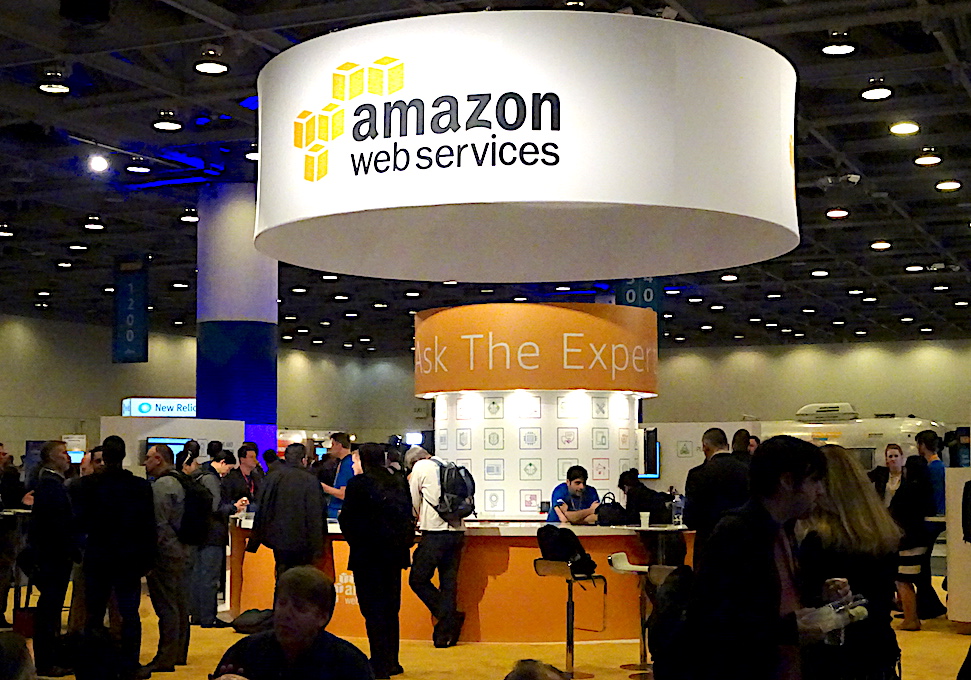 CLOUD
CLOUD
 CLOUD
CLOUD
 CLOUD
CLOUD
The concept of business-by-API has been around for a few years now. At Wikibon, we’ve written about it in some depth, noting that in digital businesses, an application programming interface and the product are pretty indistinguishable.
It’s a powerful concept: Publish an API, let customers engage it, use it to exchange value.
To do it right, though, requires a fair amount of serious business and technology architecture work. For example, the API had better be tightly defined or your business can find itself engaging in unexpected behavior. It better be easy to use or it can become a customer experience nightmare. And it better successfully incorporate features for mediating, monitoring, and monetizing any services provisioned.
One company that has done a great job of turning products into APIs is Amazon Web Services. Indeed, the whole company is a series of APIs: Need computing resources? There’s any API to do that. Need to track utilization? There’s an API to do that. Need to add additional functional capabilities? Yup, there’s an API to do that.
But AWS is starting to move beyond business-by-API. Through the AWS Marketplace, they’re starting to enable ecosystem-by-API. It’s a grand vision that’s poised to have a huge impact on the software marketplace.
At the AWS Summit in San Francisco today (pictured), the company extended AWS Marketplace to include the “SaaS Contracts Feature.” What is it? AWS customers can now purchases multi-year SaaS contracts through AWS and use the AWS shopping cart and billing process to procure, pay and monitor purchases.
Importantly, any SaaS service is accounted for independent of any EC2 or related resources running it. That means that in select instances, a customer can buy through AWS contracts and run anywhere: in the AWS cloud, on-premises or even in another cloud supplier.
The process to use the AWS contract service appears very clean. AWS claims it will require a couple of engineers four weeks to read and apply the API to a software company’s business. That’s a pretty simple way for a software company to go from a product licensing model to a service provisioning model. Of course, a whole raft of other considerations obtains, but AWS is streamlining one of the biggest.
Big users, too, can think more deeply about using AWS as a service catalog. Once a piece of software – including homegrown software – is published into the AWS catalog, it enjoys the full range of features available to software vendors. If you’re a chief information officer and you like how AMI works for commercial software, you should explore how it might work for your internal software, too. Again, the devil is in the details, but the direction is compelling.
Is this the answer to everything? Of course not. AWS says it’s dedicated to driving “friction” out of the software marketplace, but transaction costs in the software industry are many and massive. For example, AWS claims (citing third-party data) that there are about 75,000 software vendors out there, and that about 1,000 new software companies are “birthed” every year through venture funding. OK, so will we see instruments like the Alexa Fund be used to alter software financing?
If we look out a few years, we can imagine that AWS has published APIs for a full range of software business activities, including partnerships for embedding third-party services and data in a composed offering. But that’s a few years out. Others, such as Microsoft Corp., Oracle Corp., and Google Inc., are going to have a say it how the final mechanisms will work. And users are going to have to significantly evolve procurement practices.
But, hey, if software is going to eat the world – and it is – then making it more bite-sized is good for business.
THANK YOU